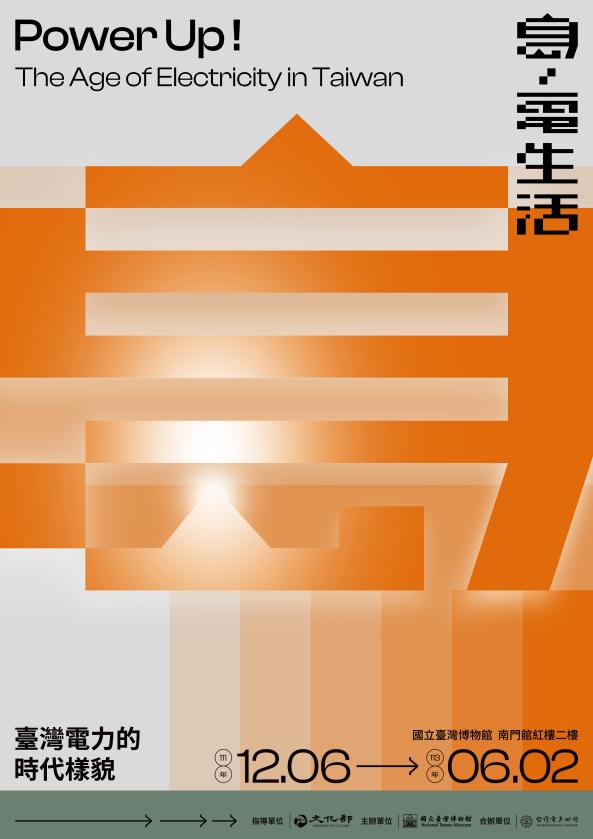| Number of Sessions | Venue |
|---|---|
|
Tuesday-Sunday: 9:30 am-5 pm
|
|
-
 Organizer
:
National Taiwan Museum
Organizer
:
National Taiwan Museum
-
 Contact Us
:
+886-2-2397-3666
Contact Us
:
+886-2-2397-3666
-
 Ticket Details
:
NT$30 Regular | NT$15 Discount
Ticket Details
:
NT$30 Regular | NT$15 Discount
-
 Opening Times
:
Tuesday-Sunday: 9:30 am-5 pm
Opening Times
:
Tuesday-Sunday: 9:30 am-5 pm
-
 Available Services
:
Photos Allowed、Advisory Service、Wi-Fi
Available Services
:
Photos Allowed、Advisory Service、Wi-Fi
In the late 19th century, Taiwan transitioned to modernization and contemporary society by capitalizing on the power of electricity. Now, our living convenience, food, clothing, accommodation and transportation are all closely associated with electrical appliances. Where does electricity come from? At the Taiwan Electric Power Development Theme Exhibition, we will take a look at the provenance of electrical power in Taiwan and how citizens learn to coexist with electricity and become heavily reliant on it. We will also explore the issue of striking a balance between the environment and energy.
As the imperial envoy turns on the light, it has become one of the iconic symbols of modernization. In 1888, the city of Taipei was illuminated like daylight at night for the first time. From coal-fired generators at the time, the island of Taiwan underwent a century of electric power reforms. From Liu Ming-Chuan's electrical facilities in the late Qing Dynasty, the construction of the power company and power plants in the period of Japanese rule, to the establishment of the Taiwan Power Company after the war and the diversification of energy sources today, the Taiwanese people's memories of living with electricity has changed constantly with time. Initially, electricity was put on hold due to the expensive cost, but we never gave up pursuing the symbol of advanced civilization and this is why we can enjoy such a comfortable and convenient modern environment.
Whether or not it is electrical safety, the cost of electricity, or the emergence of a plethora of electrical appliances, they all play an integral part in our lives. The supply and demand for electricity reflect the status quo. The power grid on the defense lines of frontier guards segregated the Japanese government from the indigenous people; in the early 20th century, the power consumption of an electric fan accounted for one-tenth of a conventional household's monthly expenditure, this goes to show the inferior living standards at that time. "The 3 marriage-saving machines" and the washing machine – the savior of housewives in the early years - outline the splendid life enjoyed by modern families through industrialization. Nonetheless, the electric meter is like an inconspicuous yet faithful interface that not only reflects life between people and the environment but also serves as warning light that a thriving civilization has resulted in the detriment of the verdant forests. Ecological sustainability and balance are yet another dilemma that people have to overcome to embrace the convenience of modern life.
The primary source of power generation is different in different periods. From predominantly hydropower complemented by thermal power in the period under Japanese rule and the early post-war period to an equal emphasis on hydropower and thermal power in the 50s and later to predominantly thermal power complemented by hydropower in the 70s, Taiwan has experienced diversified energy development. Besides the mainstream hydropower and thermal power, with the advent of technology, other new alternatives such as nuclear energy, wind power, solar energy and biomass energy are now also available in Taiwan.
